CLOSE
Search for “” keywords, total search results
CLOSE
Search for “” keywords, total search results
2018.August
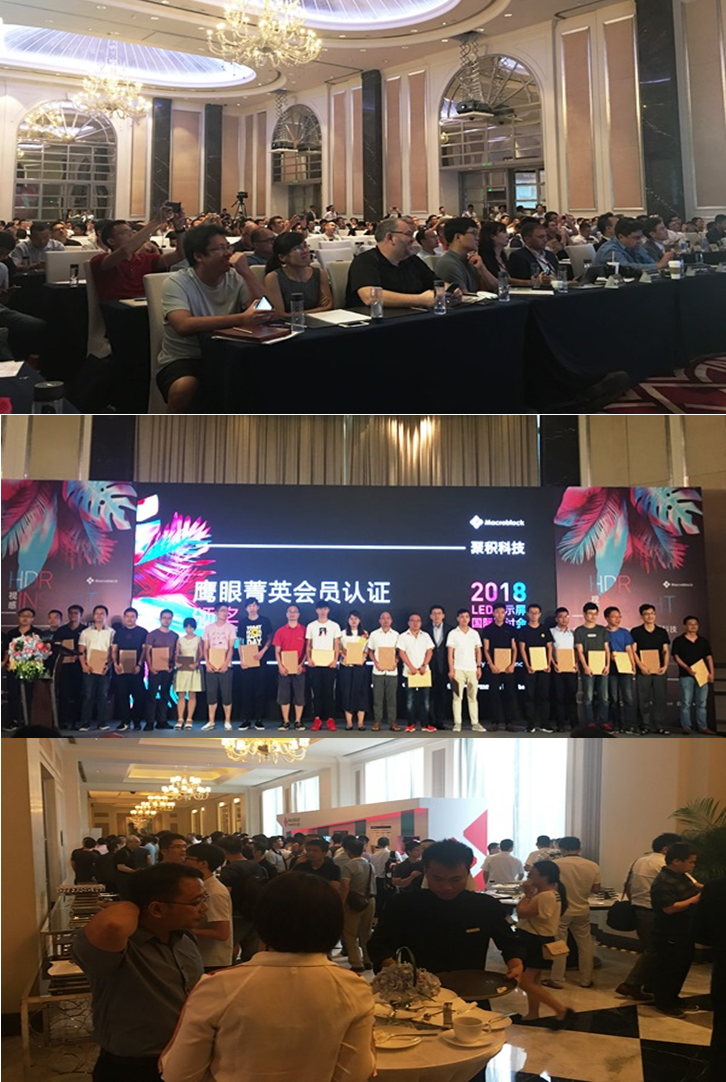
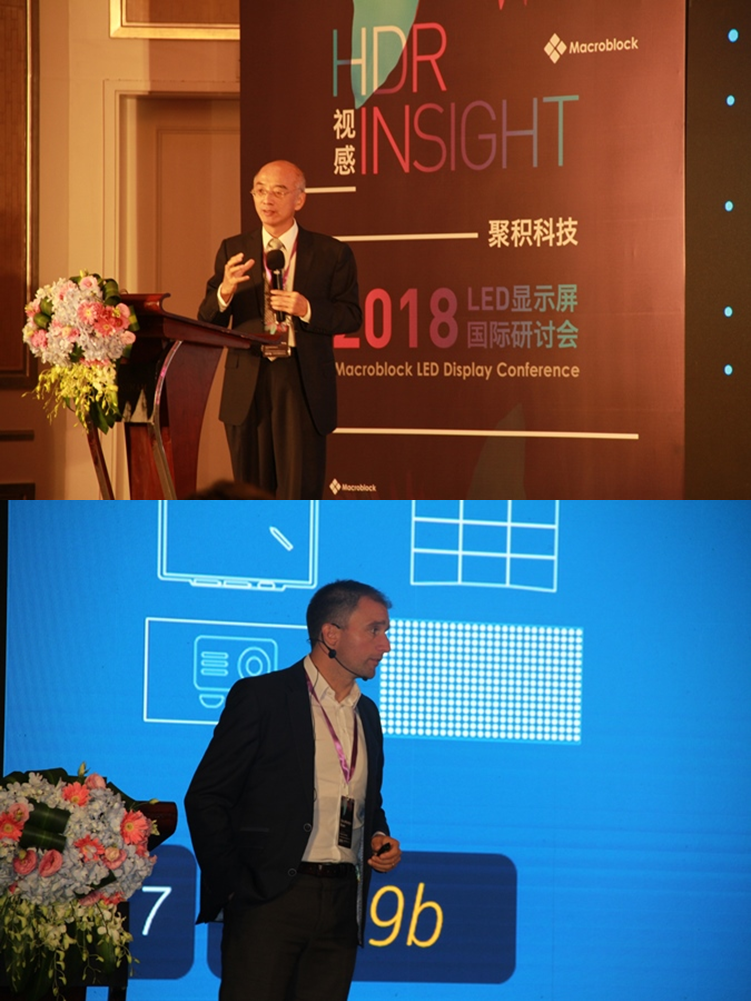
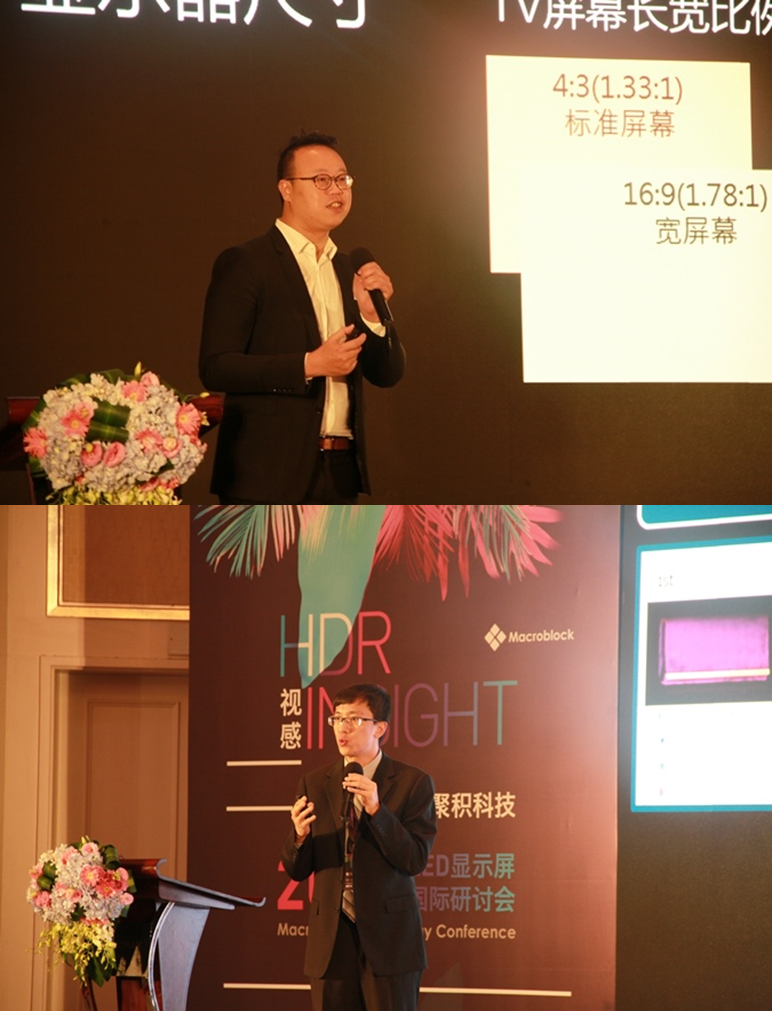
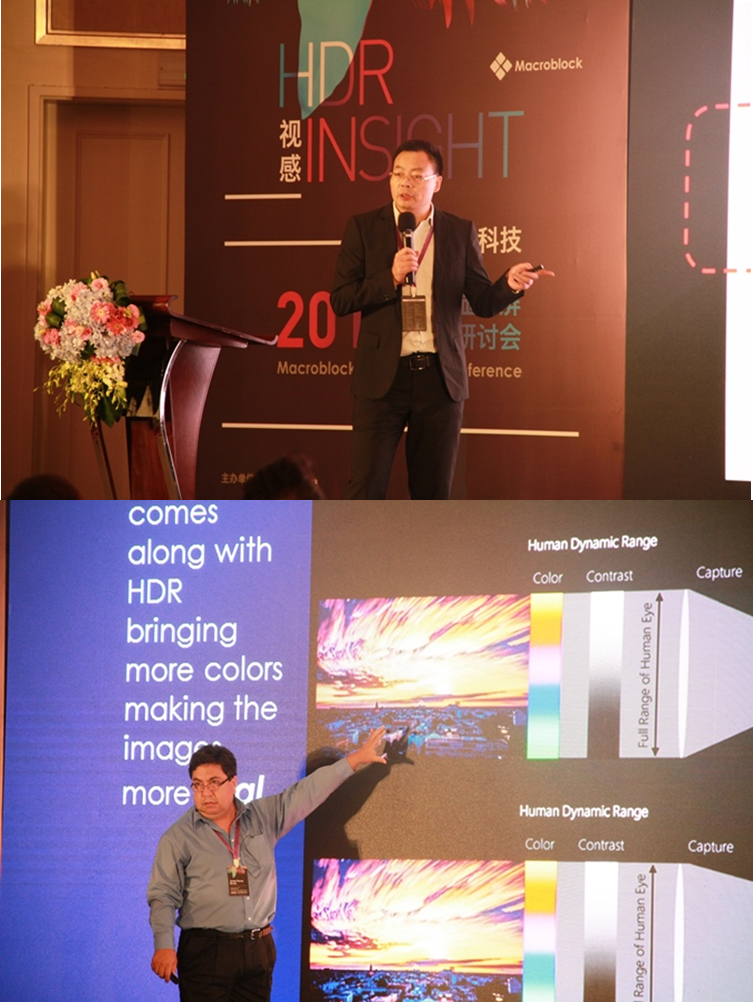
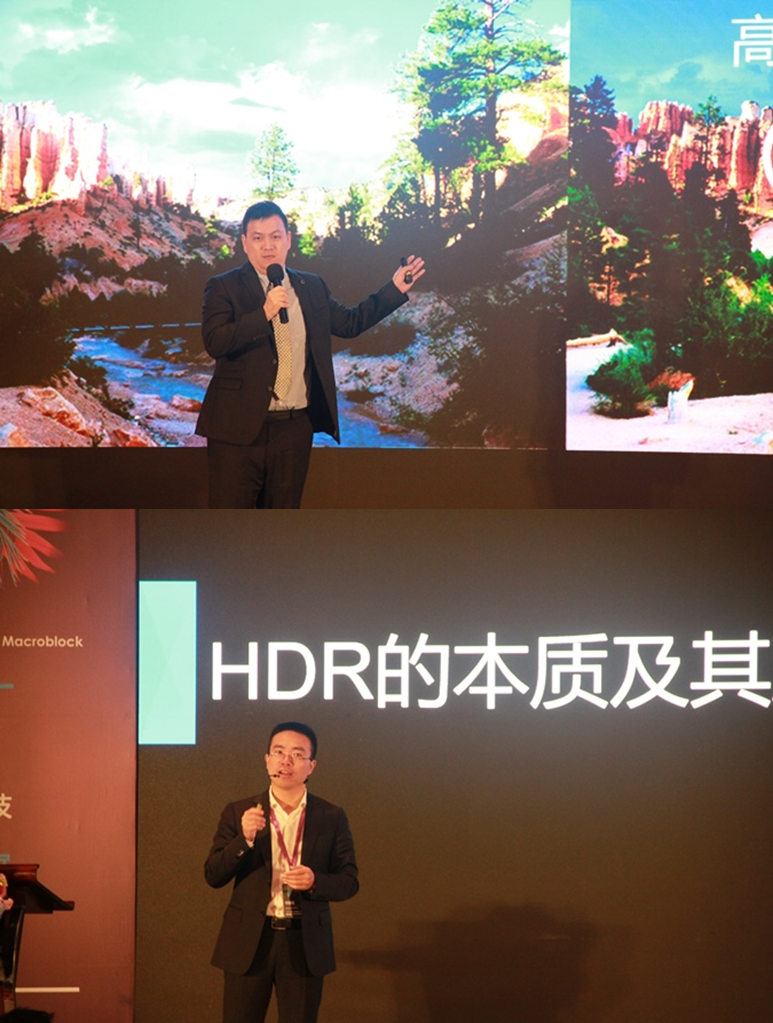
2018 Macroblock LED Display Conference perfectly ended with insightful and knowledgeable sharing at the Shenzhen Langham Hotel on July 26. Macroblock themed the conference with “HDR Insight” and invited LED display professionals for sharing, gaining a lot of attention in the industry.
The opening remarks from Mr. LC Yang, Macroblock’s Chairman, brought up Samsung’s LED displays in cinema application and led audiences into an open discussion on how LED displays can reach HDR standards and how far HDR is away from the industry. Other trends including LED displays with IoT and mini-LED/micro-LED applications are also the focuses of the conference.
Mr. Chris Mcintyre-Brown, the Associate Director of Futuresource Consulting Company, started with the LED display market insight. According to Futuresource’s report, the total market value of global large format display in 2017 is $28.7b, and LED displays accounts for $5.3b (18% of the total market). Mr. Brown further depicts that LED displays are still in the fast-growing stage and the market value is estimated to grow up to $7.6b in 2021. New LED display technologies potentially bring a step change to the industry, but standards are needed. As the technology is getting mature, the cost is not the most important factor. Image quality, system reliability, localized and professional services are the keys to success. The target verticals for HDR include cinema, visualization, eSport, theme parks and attractions, high end retail, and broadcasting. These are wide applications and potential for LED displays.
Following more stringent requirements for LED displays, Mr. Kurt Tsai, Technical Marketing Manager of Macroblock, talked about “Innovative Driver IC Solutions for Cutting-Edge LED Displays”. To meet the rising demand for captivating visual experience, Mr. Tsai pointed out some key factors: 1. Resolution to reach 4K and video input source to reach higher image quality. 2. The application environment determines the LED display brightness. LED display brightness must be as low as possible at a closer viewing distance and darker viewing environment. This also relates to a more precise LED current control (uA level) by LED driver ICs. 3. High grayscale with high refresh rate to meet HDR standard. Grayscale determines contrast, which is significant to HDR. LED driver ICs must provide high grayscale and high refresh rate simultaneously in order to meet HDR standard. 4. Low power consumption of fine pitch LED displays. The power consumption and the surface temperature of LED displays have to be as low as possible especially when the viewing distance gets closer. In fine pitch LED displays, the power consumption ratio of LED driver ICs becomes larger in the overall display system; therefore, LED driver ICs have to reduce power in any way. 5. Simplified PCB routing for fine pitch LED displays. As the PCB routing area is limited, highly-integrated LED driver ICs become a standard requirement for cutting-edge fine pitch LED displays.
Another trend is BIG DATA. How to precisely analyze big data on LED displays is the key sharing from Mr. TC Yang, IoT Business Development Manager of Macroblock. Targeting the commercial retail market, Macroblock recently launches an easy-installed precision marketing set-top box, allowing any display to be IoT-enabled. The IoT-enabled LED displays will be able to collect data, analyze data and provide precise marketing strategies through various sensing methods and professional dashboard tools.
For the popular topic : mini-LED and micro-LED, Mr. Mark Liu, Director of Micro&Mini LED Research Department at Nationstar, presented Nationstar’s mini-LED product development and future potential on mini-LED display and backlight applications. Nationstar’s IMD (Integrated Mounted Device) mini-LED are featuring better uniformity of color, lower BOM cost for LED displays due to its structural design, and easy for soldering and maintenance.
After the tea time break, the second half conference focused more in-depth discussion on HDR technology and LED displays. Mr. Jorge Perez Bravo, Vice President of R&D at Nanolumens, started with the market trend that LED screen technology is getting into a position in the market where it is now compared and starts competing against to standard LCD/OLED high definition screens. High Dynamic Range (HDR) visual capability is becoming a key feature on display screens and an important factor on how displays are being specified; often referenced as quality of the video performance, such as contrast ratio, color accuracy, color bit depth, refresh rate and resolution. A wider color gamut comes along with HDR bringing more colors making the images more real. The challenge is to make HDR standard to work with existing LED screens. Mr. Bravo insightfully shared how to make HDR work on existing LED displays by integrating new HDR requirements on LED driver ICs, controller systems and video processors.
When talking about HDR on LED driver ICs, Mr. Alan Tiao, LED Display Product Manager of Macroblock, shared the technology challenges and achievements on how Macroblock’s LED driver ICs strived to meet HDR requirements. There are three important factors that LED driver ICs must achieve in order to optimize HDR performance on LED displays at the current stage: 1. High contrast. 2. More detail in shadows of dark and bright scene 3. Higher color depth in a color volume. There is no HDR standard for LED display industry yet. However, take the HDR standards of VESA Certified Display HDR or Ultra™ Premium as an example, the HDR contrast ratio is 0.05-1,000nits (or 20,000 : 1). Macroblock demonstrated a 32-scan, P0.9375 LED display module embedded with 48-channel, highly-integrated LED driver ICs-MBI5359, and the contrast ratio can reach 25,000 : 1 at 16-bit grayscales and 3840 Hz refresh rate. In addition, the LED driver IC is required to output grayscale with higher bit depth and higher color depth in order to preserve more detail in shadows of dark and bright scenes, as well as to recreates the scenes with vivid color. MBI5359 is capable of providing the highest grayscale, 16 bits to LED displays. Moreover, to provide accurate color in a color volume, the LED driver IC is responsible for precise output current control (±1.5%)
Controllers also play an important role in LED display system. Mr. Aaron He, Vice President of Novastar, shared how controllers can help LED displays to come closer to HDR standards. Mr. He pointed out that visual performance on any display device is trying to reach the maximum values at the three areas: 1. Color gamut (BT. 2020). 2. Brightness at 10000nits. 3. Dynamic range at 100000 : 1. It is critical for the LED display supply chain to work together to reach HDR standards. From LED chips, LED driver ICs, controller systems, video processors, and LED display systems, the integration of the whole system has to speed up, and Nova newly-launched MCTRL4K with A8 or A10 can support HDR10 on LED displays.
Imagine micro-LED meets HDR, how will it be? Mr. Kerry Huang, micro-LED Business Development Manager of Macroblock, presented his points of view on the hot topic: micro-LED trends. Mr. Huang predicted that the fastest-growing applications of micro-LED are on large format display and backlight. Sony launched CLEDIS P1.26; Samsung launched The Wall P0.85; Macroblock first showcased P0.75 mini-LED modules at ISE 2018, and all big display players are speeding up the research and development on mini-LED and micro-LED. The trend is clear, and HDR standard becomes a must when it comes to mini-LED and micro-LED displays. It is very promising to apply mini-LED and micro-LED on ultra-fine pitch LED displays because of the high luminous efficacy of mini-LED and micro-LED for its face-down structure. Though there are challenges ahead for mass transfer technology, the failure rate of dead pixel has apparently dropped. Mr. Huang further explained that LED failure prediction is necessary for micro-LED mass production. Macroblock’s highly-integrated LED driver IC-MBI5359 is specifically designed with this feature for micro-LED applications. The production yield rate of mini-LED modules has been greatly improved lately. Mr. Huang is optimistic that mini-LED display modules will be ready for mass production in the first quarter of 2019.
Mr. Larry Lee, General Manager of Macroblock China, wrapped up all the key points at the conference. Mr. Lee also showed the potential opportunity of local dimming backlight applications designed with Macroblock’s MBI5353 and MBI5359. In the end of the conference, Mr. Lee announced that Macroblock is ready for ultra-fine pitch LED displays by presenting a comprehensive product roadmap of 48-Channel, highly-integrated LED driver ICs from the standard MBI5325 to the high-performance MBI5359 and MBI5759.
In addition, there was a Hawkeye Elite Club Member Award session. This special award is presented to Hawkeye clients’ professional engineers who completed the training program including Macroblock’s Hawkeye product knowledge, LED display design and fine-tuning skills with Hawkeye products, and passed the hands-on exams to get this honorable certificate. We congratulate the engineers who got the awards, and the Hawkeye Elite Club Member list can be found at Macroblock’s website: http://www.mblock.com.tw/en/download/?cl=
Thank you all for attending Macroblock’s 13th LED display conference, and made it an insightful and influential one. We look forward to seeing you next summer.